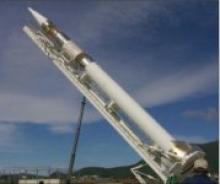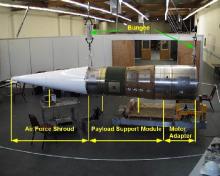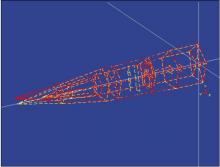|
Atmospheric Interceptor Technology (ait-2) Modal Survey - Overview In support of the Air Force Space and Missile System’s atmospheric interceptor technology program, Navcon Engineering was contracted to conduct a modal survey test on the front section of the ait-2. The measured modal parameters (natural frequencies and mode shapes) were used to verify the ait-2 finite element model. The damping values were used in the loads analysis. |
|
On September 15, 1999, ait-2 was launched from Kodiak Island, Alaska in a south-easterly direction with an impact range of over 1200 miles and an apogee of over 600 miles. The mission was designed to conduct several complex maneuvers during the post-boost phase of flight. These included maneuvers to accommodate viewing by on-board instruments and to provide optimum target viewing from ground based radar systems. |
|
The ait-2 test article shown in the photograph weighed approximately 1450 lbs and measured 221" in length. The ait-2 Front Section included all components forward of the ait-2 2nd stage motor including the Motor Adapter, Payload Support Module, Air Force Shroud with Extension and the Army Shroud Ejection Experiment. The modal survey was conducted using a SIMO testing method. The data acquisition system included an HP35670A Dynamic Signal Analyzer, an HP3566A Dynamic Signal Analyzer, an APS Dynamics Model 113 long stroke electro-dynamic exciter and PCB instrumentation. |
|
The modal test model included 100 tri-axial nodal point. The data was analyzed using ME'Scope by Vibrant Technology. A sample mode shape is shown in adjacent graphic. |




